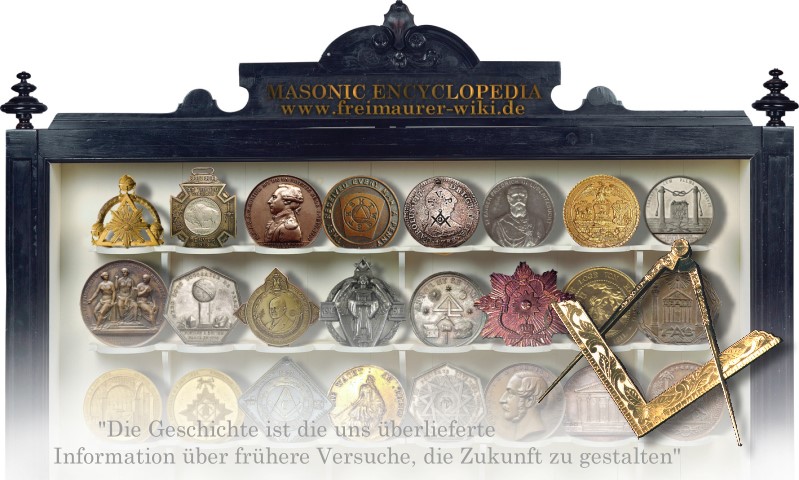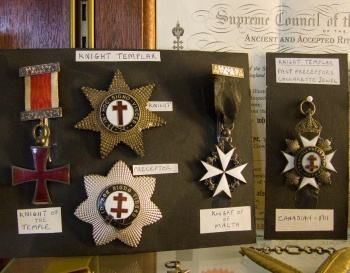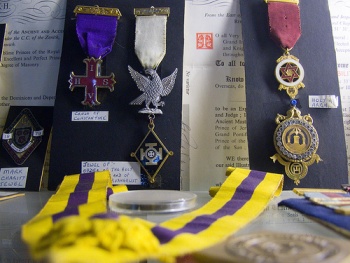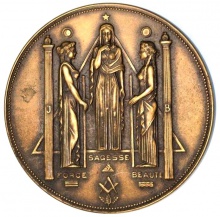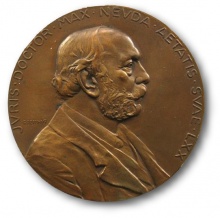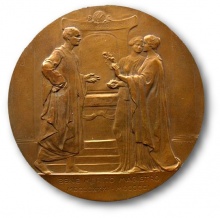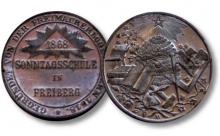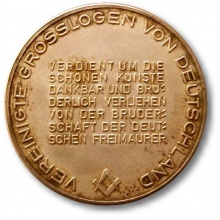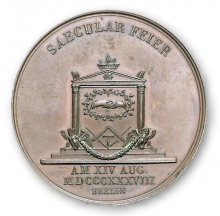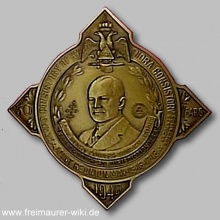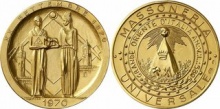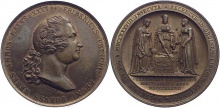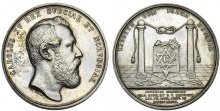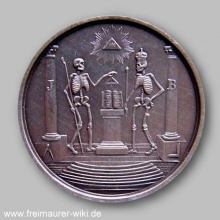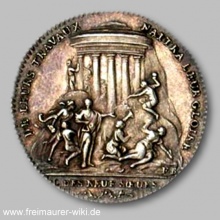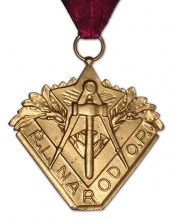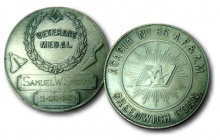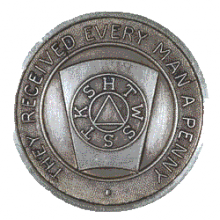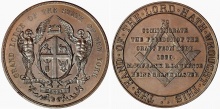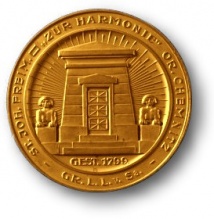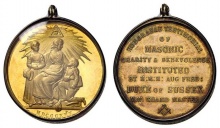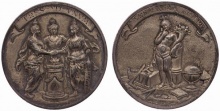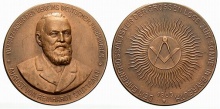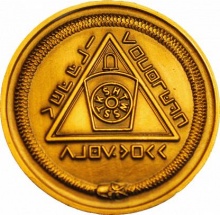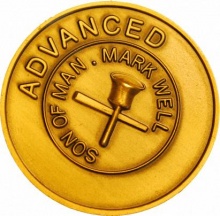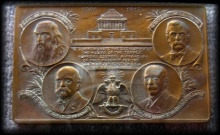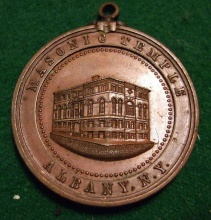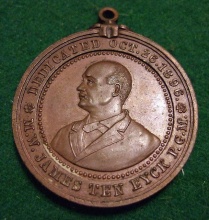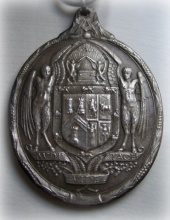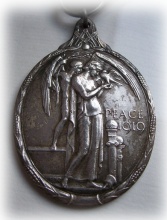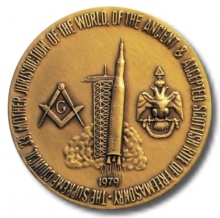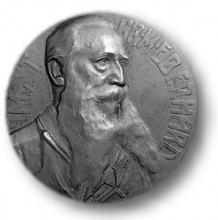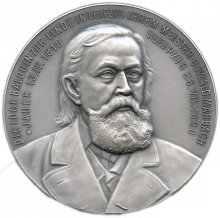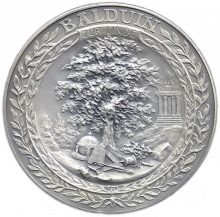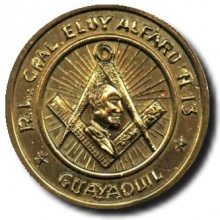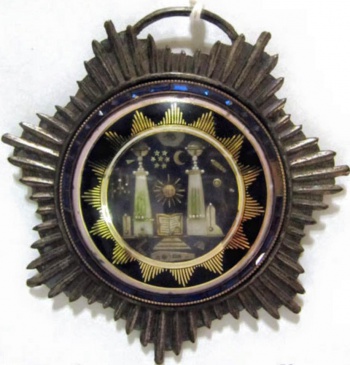Bijoux und Medaillen: Unterschied zwischen den Versionen
K (Formatiert, Bildunterschrift mittels 'thumb', Sortiervermerk) |
|||
| (122 dazwischenliegende Versionen von 7 Benutzern werden nicht angezeigt) | |||
| Zeile 1: | Zeile 1: | ||
| − | =Logen Bijoux= | + | [[Datei:HeaderSchaukastensmall.jpg]] |
| + | |||
| + | == Bijoux und Medaillen == | ||
| + | |||
| + | |||
| + | [[Datei:429244229 b8ea679ab2 o.jpg|thumb|350px|Image Courtesy of Brother Chris John Beckett: Knight Templar Masonic medals and insignia. In an exhibition case at Dartford Masonic Centre, West Hill, Dartford, Kent.]] | ||
| + | |||
| + | [[Datei:429561433_34beae7601.jpg|thumb|350px|Image Courtesy of Brother Chris John Beckett: The Cross of Constantine, Holy Arch, and other Masonic medals and insignia. In an exhibition case at Dartford Masonic Centre, West Hill,Dartford, Kent.]] | ||
| + | |||
| + | ==Logen Bijoux== | ||
| + | |||
Plural: Bijoux, franz. für 'Kleinod' | Plural: Bijoux, franz. für 'Kleinod' | ||
| − | |||
| − | |||
| − | |||
| − | + | Ein [[Bijou]] ist das Logenabzeichen der Freimaurer. Es ist in vielen aber nicht in allen [[Loge]]n üblich. | |
| − | + | Darüberhinaus gibt es zu besonderen Anlässen und Ehrungen Gedenkmedaillen und Münzen mit freimaurerischen Motiven. | |
| − | |||
| − | |||
| − | |||
| − | |||
| − | |||
| − | |||
| − | |||
| − | |||
| − | |||
| − | |||
| − | |||
| − | |||
| − | |||
| − | |||
| − | |||
| − | |||
| − | |||
| − | |||
| − | |||
| − | |||
| − | |||
| − | |||
| − | |||
| − | |||
| − | |||
| − | |||
| − | |||
| − | |||
| − | + | Das umfassendste Kompendium wurde zusammengestellt von Br. [[Ernst-Günther Geppert]]. | |
| − | = | + | ===Galerie der Münzen und Medaillen=== |
| − | |||
| − | |||
| − | |||
| − | |||
| + | <gallery widths="220" heights="220" perrow="3"> | ||
| + | Bild:WSS.jpg | ||
| + | Bild:Neuda Vor.jpg|Medaille 1901 Wien Bronze Max Neuda gewidmed von der Loge "[[Zukunft]]" | ||
| + | Bild:Neuda Rück.jpg|Rückseite der Widmungsmedaille für Max Neuda | ||
| + | Bild:Sonntagsschule.jpg|Sonntagsschule Freiberg | ||
| + | Bild:Kuenste.jpg|Großlogen von Deutschland | ||
| + | Bild:Berlin Saecularfeier.jpg|Saecularfeier Berlin | ||
| + | Bild:AASR.jpg|AASR | ||
| + | Bild:Masonereia Universale.jpg|Masoneria Universale / Italien | ||
| + | Bild:Bijou1.jpg|Säcularfeier Aufn. Friedrichs II. | ||
| + | Bild:Bijou2.jpg|Karl XV von Schweden und Norwegen. Großmeister-Medaille 1872. | ||
| + | Bild:Trancendencia.jpg|Trancendencia-Lodge | ||
| + | Bild:Les neuf soeurs.jpg|Les neuf Soeurs | ||
| + | Bild:270847 10150881786752688 227743349 n.jpg|Prag | ||
| + | Bild:Veteran.jpg|Veteranenmedaille | ||
| + | Bild:Bijou11.png|[[Mark Tokens]] mit Schlußsteinsymbolik | ||
| + | Bild:Bijou4.jpg|Gedächtnis-Bijou [[New York Grand Lodge|Großloge von New York]] 1889 | ||
| + | Bild:1AChemnitz.jpg|Harmonie / Chemnitz | ||
Bild:Bijou5.jpg|Charity-Medaille Duke of Sussex 1926 | Bild:Bijou5.jpg|Charity-Medaille Duke of Sussex 1926 | ||
Bild:Bijou8.jpg|Tres ad unum / [[Füllhorn]]-Symbolik | Bild:Bijou8.jpg|Tres ad unum / [[Füllhorn]]-Symbolik | ||
| − | Bild:Bijou9.jpg|[[Verein | + | Bild:Bijou9.jpg|[[Verein Deutscher Freimaurer]] August von Reinhard 1905 |
| − | |||
Bild:Tokenfront.jpg|[[Token]] Vorderseite | Bild:Tokenfront.jpg|[[Token]] Vorderseite | ||
Bild:Tokenback.jpg|[[Token]] Rückseite | Bild:Tokenback.jpg|[[Token]] Rückseite | ||
Bild:19cfe380.jpg|[[Freimaurer-Museum St. Michaelisdonn]] | Bild:19cfe380.jpg|[[Freimaurer-Museum St. Michaelisdonn]] | ||
| − | Bild: | + | Bild:3336780423 13c1acd855 z.jpg|Masonic Temple Albany NY [http://www.flickr.com/photos/woodysworld1778/3336780423/ Foto: Jerry "Woody"] |
| − | + | Bild:JamesTenEyck.jpg|Gedenkmedaille James Ten Eyck [http://www.flickr.com/photos/woodysworld1778/3337610930/in/photostream/ Foto: Jerry "Woody"] | |
| − | + | Bild:DieterWal1.jpg|[[UGLE]] | |
| − | + | Bild:DieterWal2.jpg|[[UGLE]] | |
| − | + | Bild:NASAsmall.jpg | |
| − | + | Bild:1aEhrenzeichen.jpg | |
| − | + | Datei:Medaille Oswald Marbach Balduin zur Linde VS.png|[[Oswald Marbach]] | |
| − | Bild: | + | Datei:Medaille Oswald Marbach Balduin zur Linde RS.png|[[Balduin zur Linde]] |
| − | + | Bild:Eloy Alfaro13.jpg|Eloy Alfaro , Guayaquil | |
| − | + | </gallery> | |
| − | Bild: | + | |
| − | Bild: | + | |
| − | Bild: | + | === Masonic jewels made by French prisoners of war, 1790-1815=== |
| − | Bild: | ||
| − | |||
| − | |||
| − | Bild: | ||
| − | |||
| − | |||
| − | |||
| − | |||
| − | + | '''Source: Sheffield Freemasonry''' | |
| + | |||
| + | [[Datei:Sheffield Freemasonry.jpg|350px|thumb|Jewel made by a French Prisoner of War in England during the Napoleonic Wars (1793-1815).]] | ||
| + | |||
| + | Jewels such as this will be available for viewing at the Exhibition held at Dore Masonic Hall Sheffield on the 9th-10th of July 2016. | ||
| + | |||
| + | Masonic jewels made by French prisoners of war, 1790-1815. During the Napoleonic Wars there were a large number of French Prisoners detained in England, amounting at one time as many as 140,000. Amongst the Prisoners was a good proportion who were Freemasons and their number can be judged from the fact that they were numerous enough to organise Lodges among themselves in various parts of England where they were detained. | ||
| + | |||
| + | As many as 30 Lodges formed by French Prisoners are on record. There was no Red Cross at this time and supplies were very limited so they worked to earn sufficient money with which to keep themselves. The more skilled amongst them were able to make the items exhibited here. They used whatever material were available, scraps of bone, mother-of-pearl and tinsel and for models they used the breast jewels worn by Freemasons worn at the time. | ||
| + | |||
| + | In the second half of the eighteenth and the early part of the nineteenth centuries, in the decades that Great Britain and France were at war, great numbers of French military personnel were captured and brought to Britain as prisoners. The greatest concentration of these was during the Revolutionary Wars of 1797-1814, when over 122,000 French prisoners resided in camps all across Britain, under conditions that were often, although not always, harsh. | ||
| + | |||
| + | Those prisoners that were freemasons could often expect kind treatment from British freemasons, being taken into their homes and lodges. The prisoners also founded lodges within their own camps. As a method of occupation and, often of money-making, these prisoners produced souvenir and novelty items from what materials they could find; figures and models from paper, bone, wood and straw. They also made masonic plaques from these basic materials. The items were then sold or traded at market and later set into metal and glass surrounds, ensuring their survival today. | ||
| + | |||
| + | == Siehe auch == | ||
| + | *[[Bijou]] | ||
| + | *[[Bijou-Herstellung]] | ||
| + | *[[Token]] | ||
| + | *[[Mark Tokens]] | ||
| + | *[[Projekt: Bijoux of the world]] | ||
| + | |||
| + | == Links == | ||
| + | *Die Denkmünzen der Freimaurerbrüderschaft von Johann Friedrich Ludwig Theodor Merzdorf. PDF Download Google Books. http://books.google.de/books?id=VU4VAAAAQAAJ&printsec=frontcover&hl=de&source=gbs_ge_summary_r&cad=0#v=thumbnail&q&f=false | ||
| + | |||
| + | {{SORTIERUNG:Bijoumedaillen}} | ||
| + | [[Kategorie:Lexikon]] | ||
Aktuelle Version vom 13. März 2017, 11:57 Uhr
Inhaltsverzeichnis
Bijoux und Medaillen
Logen Bijoux
Plural: Bijoux, franz. für 'Kleinod'
Ein Bijou ist das Logenabzeichen der Freimaurer. Es ist in vielen aber nicht in allen Logen üblich.
Darüberhinaus gibt es zu besonderen Anlässen und Ehrungen Gedenkmedaillen und Münzen mit freimaurerischen Motiven.
Das umfassendste Kompendium wurde zusammengestellt von Br. Ernst-Günther Geppert.
Galerie der Münzen und Medaillen
Medaille 1901 Wien Bronze Max Neuda gewidmed von der Loge "Zukunft"
Mark Tokens mit Schlußsteinsymbolik
Gedächtnis-Bijou Großloge von New York 1889
Tres ad unum / Füllhorn-Symbolik
Verein Deutscher Freimaurer August von Reinhard 1905
Token Vorderseite
Token Rückseite
Masonic Temple Albany NY Foto: Jerry "Woody"
Gedenkmedaille James Ten Eyck Foto: Jerry "Woody"
Masonic jewels made by French prisoners of war, 1790-1815
Source: Sheffield Freemasonry
Jewels such as this will be available for viewing at the Exhibition held at Dore Masonic Hall Sheffield on the 9th-10th of July 2016.
Masonic jewels made by French prisoners of war, 1790-1815. During the Napoleonic Wars there were a large number of French Prisoners detained in England, amounting at one time as many as 140,000. Amongst the Prisoners was a good proportion who were Freemasons and their number can be judged from the fact that they were numerous enough to organise Lodges among themselves in various parts of England where they were detained.
As many as 30 Lodges formed by French Prisoners are on record. There was no Red Cross at this time and supplies were very limited so they worked to earn sufficient money with which to keep themselves. The more skilled amongst them were able to make the items exhibited here. They used whatever material were available, scraps of bone, mother-of-pearl and tinsel and for models they used the breast jewels worn by Freemasons worn at the time.
In the second half of the eighteenth and the early part of the nineteenth centuries, in the decades that Great Britain and France were at war, great numbers of French military personnel were captured and brought to Britain as prisoners. The greatest concentration of these was during the Revolutionary Wars of 1797-1814, when over 122,000 French prisoners resided in camps all across Britain, under conditions that were often, although not always, harsh.
Those prisoners that were freemasons could often expect kind treatment from British freemasons, being taken into their homes and lodges. The prisoners also founded lodges within their own camps. As a method of occupation and, often of money-making, these prisoners produced souvenir and novelty items from what materials they could find; figures and models from paper, bone, wood and straw. They also made masonic plaques from these basic materials. The items were then sold or traded at market and later set into metal and glass surrounds, ensuring their survival today.
Siehe auch
Links
- Die Denkmünzen der Freimaurerbrüderschaft von Johann Friedrich Ludwig Theodor Merzdorf. PDF Download Google Books. http://books.google.de/books?id=VU4VAAAAQAAJ&printsec=frontcover&hl=de&source=gbs_ge_summary_r&cad=0#v=thumbnail&q&f=false

